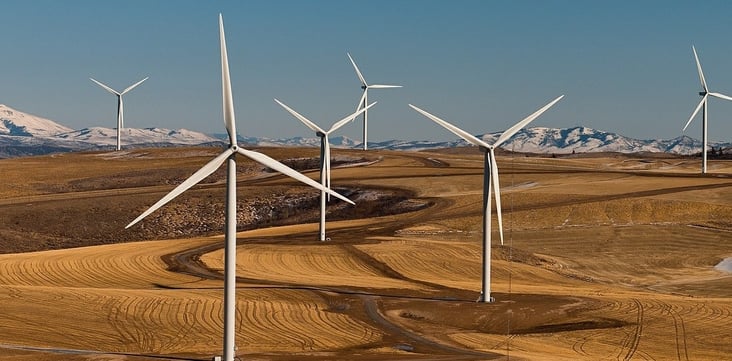
Even considering the turmoil in the overall stock market this week, advanced energy is on a bit of a Wall Street rollercoaster. Specifically, wind is riding a wave, while solar shares are in the doldrums – even though both advanced energy technologies are on a roll.
Late last week, Alex Morales wrote a story for Bloomberg outlining the new status of wind turbine manufacturers as “top stock performers.” AEE member company Vestas, Gamesa, and Nordex have all had record-breaking years so far. Bloomberg New Energy Finance forecasts that global installations will reach 60 GW in 2015 – a 25 percent increase this year alone.
“The market is definitely strong this year, and it’s a combination of policies and political will to tackle climate change and to increase the share of renewables,” Vestas Chief Executive Officer Anders Runevad said in a phone interview with Bloomberg.
That the market for wind is growing isn’t surprising. Greentech Media reported that wind power is a major compliance solution for states facing new and ambitious emissions standards in the Clean Power Plan, and wind is reaching price parity with traditional fossil fuels in many parts of the country. In October 2013, Xcel Energy submitted plans to the Colorado Public Utility Commission to buy electricity generated by wind – simply because it was the cheapest option available. Lawrence Berkeley National Lab recently reported that the price of wind power in PPAs signed in 2014 averaged just 2.35 cents per kWh.
What is more surprising, given the solar industry’s similarly good year – in terms of socket parity, increased installations, and major investment – is that solar stocks are not doing as well. In a story for Reuters, Nichola Groom reports, “solar is having a great year, except on Wall Street.” Solar installations are expected to increase by a third this year, the price of solar is at parity in several areas like Florida and Hawaii (and Colorado with Xcel Energy, which included solar in the plan mentioned above), and the solar industry will be similarly boosted by the Clean Power Plan. Even Google’s getting in on the solar game, with its new Project Sunroof.
But, as Groom points out, Wall Street has been in a hurry to sell off solar, largely due to the belief that a drop in oil prices will quell demand for solar panels (even though oil is not a major fuel for electricity generation), and that solar companies are taking on too much too fast. It also may be due to the sheer number of solar companies that have recently gone on the market: six in the past year. Many newly public companies have a quick buy-and-sell cycle before reaching a steady price. It may also be the market itself being, well, weird. This week especially has been a roller coaster for Wall Street, with the Dow losing more than 1,000 points within hours of the opening bell on Monday.
Regardless of stock market turmoil, advanced energy companies continue to do business. AEE member Bosch announced this week that it is acquiring Seeo, a Silicon Valley advanced battery firm specializing in electric vehicle batteries. Seeo’s DryLyte batteries use solid electrolyte to create a battery capable of delivering high energy density reliably and safely. Bosch is already a major supplier to the automobile industry, and this acquisition helps to solidify its position in advanced vehicles.
Meanwhile, AEE member EnerNOC has signed on with Walgreens to provide the company’s Energy Intelligence Software to 8,300 locations. The software-as-a-service platform will allow Walgreens to manage its energy use more directly. It’s also an “on-ramp” to more direct energy management, Fielder Hiss, EnerNOC’s vice president of marketing and product management, said in an interview with Greentech Media. In the future, “we hope to expand this to real-time metering and monitoring for them, optimizing energy spend.”
Finally, AEE member GE this week announced a deal to provide 30 MW of energy storage infrastructure for Coachella Energy Storage Partners (CESP), which is contracting with south central California’s Imperial Irrigation District (IID). GE is no stranger to the California energy storage market: it already contracts with Con Edison Development in California. IID is doing this storage deal independently of California’s policy requiring investor-owned electric utilities to incorporate energy storage into their portfolios, as IID is not investor-owned, and it’s a water utility, not electric.
“We chose GE as the energy storage system provider for this project because they supplied the most comprehensive solution at a competitive price,” Mike Abatti, president of CESP, said in a statement. “GE is well-positioned to serve the needs of the project and will remain a stable, reliable technology provider as the energy storage industry evolves.”
Earlier this year, AEEI produced Competitiveness of Renewable Energy and Energy Efficiency in U.S. Markets. This report shows that renewable energy and energy efficiency are competitive resources in today’s marketplace that will not only be cost-effective mechanisms for CPP compliance but should also be expected to grow strictly on the basis of competitiveness.
